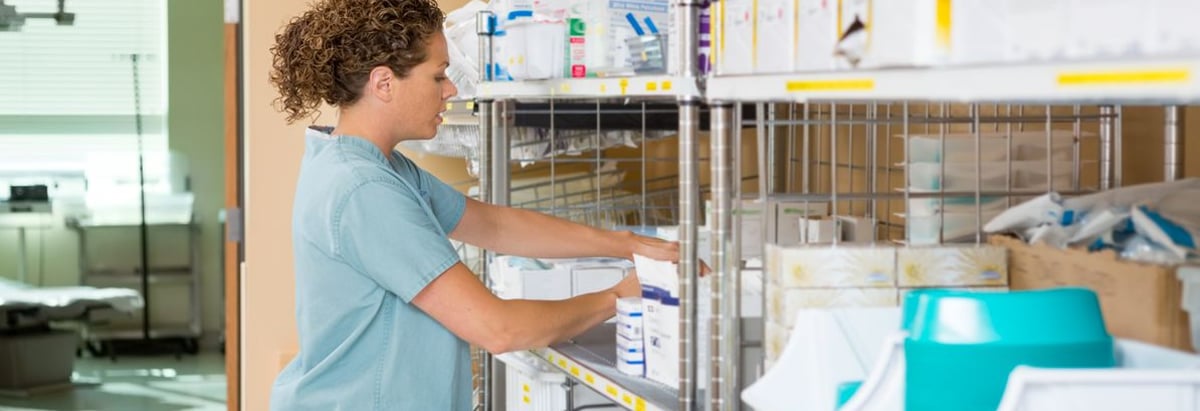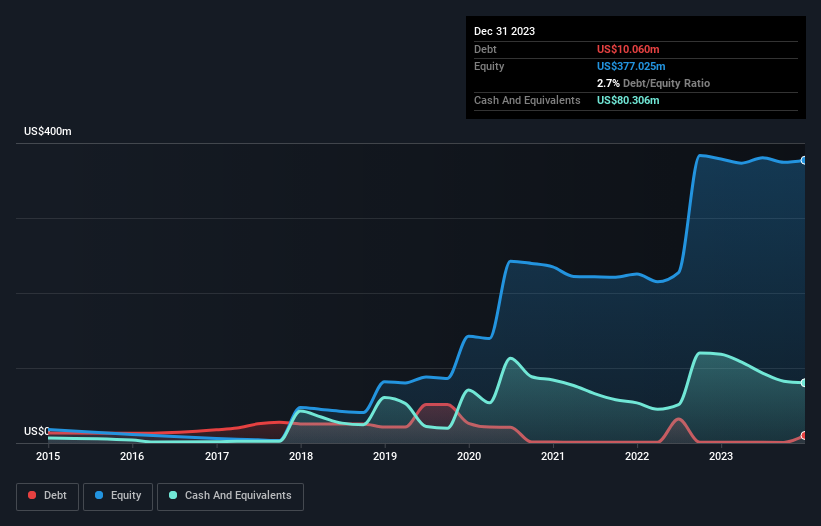- United States
- /
- Medical Equipment
- /
- NasdaqGM:KIDS
OrthoPediatrics (NASDAQ:KIDS) Has Debt But No Earnings; Should You Worry?

Warren Buffett famously said, 'Volatility is far from synonymous with risk.' So it seems the smart money knows that debt - which is usually involved in bankruptcies - is a very important factor, when you assess how risky a company is. Importantly, OrthoPediatrics Corp. (NASDAQ:KIDS) does carry debt. But the real question is whether this debt is making the company risky.
When Is Debt A Problem?
Debt is a tool to help businesses grow, but if a business is incapable of paying off its lenders, then it exists at their mercy. Ultimately, if the company can't fulfill its legal obligations to repay debt, shareholders could walk away with nothing. However, a more usual (but still expensive) situation is where a company must dilute shareholders at a cheap share price simply to get debt under control. Of course, debt can be an important tool in businesses, particularly capital heavy businesses. The first thing to do when considering how much debt a business uses is to look at its cash and debt together.
Check out our latest analysis for OrthoPediatrics
How Much Debt Does OrthoPediatrics Carry?
The image below, which you can click on for greater detail, shows that at December 2023 OrthoPediatrics had debt of US$10.1m, up from US$907.0k in one year. But it also has US$80.3m in cash to offset that, meaning it has US$70.2m net cash.

How Healthy Is OrthoPediatrics' Balance Sheet?
We can see from the most recent balance sheet that OrthoPediatrics had liabilities of US$41.7m falling due within a year, and liabilities of US$20.1m due beyond that. On the other hand, it had cash of US$80.3m and US$34.6m worth of receivables due within a year. So it can boast US$53.2m more liquid assets than total liabilities.
This short term liquidity is a sign that OrthoPediatrics could probably pay off its debt with ease, as its balance sheet is far from stretched. Succinctly put, OrthoPediatrics boasts net cash, so it's fair to say it does not have a heavy debt load! The balance sheet is clearly the area to focus on when you are analysing debt. But it is future earnings, more than anything, that will determine OrthoPediatrics's ability to maintain a healthy balance sheet going forward. So if you want to see what the professionals think, you might find this free report on analyst profit forecasts to be interesting.
Over 12 months, OrthoPediatrics reported revenue of US$149m, which is a gain of 22%, although it did not report any earnings before interest and tax. With any luck the company will be able to grow its way to profitability.
So How Risky Is OrthoPediatrics?
By their very nature companies that are losing money are more risky than those with a long history of profitability. And the fact is that over the last twelve months OrthoPediatrics lost money at the earnings before interest and tax (EBIT) line. Indeed, in that time it burnt through US$46m of cash and made a loss of US$21m. However, it has net cash of US$70.2m, so it has a bit of time before it will need more capital. OrthoPediatrics's revenue growth shone bright over the last year, so it may well be in a position to turn a profit in due course. Pre-profit companies are often risky, but they can also offer great rewards. There's no doubt that we learn most about debt from the balance sheet. However, not all investment risk resides within the balance sheet - far from it. These risks can be hard to spot. Every company has them, and we've spotted 2 warning signs for OrthoPediatrics you should know about.
If you're interested in investing in businesses that can grow profits without the burden of debt, then check out this free list of growing businesses that have net cash on the balance sheet.
New: AI Stock Screener & Alerts
Our new AI Stock Screener scans the market every day to uncover opportunities.
• Dividend Powerhouses (3%+ Yield)
• Undervalued Small Caps with Insider Buying
• High growth Tech and AI Companies
Or build your own from over 50 metrics.
Have feedback on this article? Concerned about the content? Get in touch with us directly. Alternatively, email editorial-team (at) simplywallst.com.
This article by Simply Wall St is general in nature. We provide commentary based on historical data and analyst forecasts only using an unbiased methodology and our articles are not intended to be financial advice. It does not constitute a recommendation to buy or sell any stock, and does not take account of your objectives, or your financial situation. We aim to bring you long-term focused analysis driven by fundamental data. Note that our analysis may not factor in the latest price-sensitive company announcements or qualitative material. Simply Wall St has no position in any stocks mentioned.
About NasdaqGM:KIDS
OrthoPediatrics
A medical device company, engages in designing, developing, and marketing anatomically appropriate implants, instruments, and specialized braces for children with orthopedic conditions in the United States and internationally.
Excellent balance sheet and slightly overvalued.
Similar Companies
Market Insights
Community Narratives


